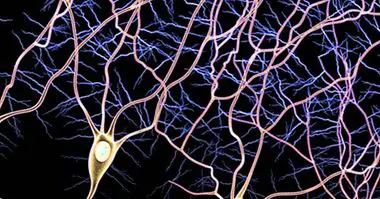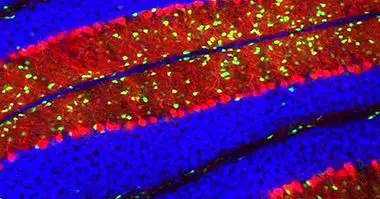Multipolar neurons: types and operation
One of the most common classifications of neurons is the one that is carried out according to their morphology; in a more particular way, they are usually divided according to the number of dendrites and axons that their cell body presents.
In this article we will describe the characteristics of the main types of multipolar neurons, much more common than bipolar and pseudounipolar in the central nervous system of humans.
- Related article: "Types of neurons: characteristics and functions"
Characteristics of multipolar neurons
Multipolar neurons are characterized mainly by presenting a single axon together with a multiple dendrite , prolongations whose main function is the reception of synaptic impulses. This kind of neuron specializes in the integration of information from other nerve cells.
This type of neuron is the most numerous in the central nervous system; its quantity is very high in the cerebral cortex, in the spinal cord and in the ganglia (sets of cellular bodies) of the autonomic nervous system. Technically any neuron with an axon and at least two dendrites is considered a multipolar neuron.
As a general rule, multipolar neurons have a soma with an approximately ovoid shape. From this cell body arise multiple dendrites that extend in all directions, forming branches of tangled appearance. These dendritic trees cause the neuron to have a larger area to receive nervous stimuli.
The axons of this type of neuron are usually very long, which facilitates the transmission of impulses throughout the central nervous system. They are often covered by Schwann cells, a type of neuroglia that forms the myelin sheaths in this part of the nervous system; This substance allows neuronal transmission to be efficient and rapid.
Multipolar neurons can be divided into two subtypes: those of class A and those of class B . Type A have very dense branched dendritic trees and many dendritic spines. In contrast, both characteristics are much less marked in multipolar class B neurons, which also have a larger soma.
- Related article: "Parts of the human brain (and functions)"
Types of multipolar neurons
Next, we will describe three of the most relevant and numerous multipolar neuron types of the human organism: Purkinje cells, pyramidal cells and Dogiel cells. Each of them has its own peculiarities, locations and functions.
1. Purkinje cells
The Purkinje cells are located in the cerebellum, the back of the brain, responsible for the coordination and monitoring of movements. The appearance of these neurons is very characteristic because of the density of your dendritic trees , which explains the strong role of reception of neural impulses that they carry out.
2. Pyramidal cells
The pyramidal cells or upper motor neurons originate in the motor cortex. This type of multipolar neuron transmits action potentials through the corticospinal tract to the lower motoneurons of the spinal cord, which allow the movement to synaptar with muscle cells .
In addition, pyramidal cells are fundamentally involved in cognition. This function is associated with the connections between the pyramidal neurons and the prefrontal cortex of the brain. It has also been hypothesized about its possible role in the visual recognition of objects.
3. Dogiel cells
Dogiel cells are a type of multipolar neuron that is located in the prevertebral sympathetic ganglia. They are part of the enteric nervous system, which regulates the functioning of the gastrointestinal tract.
Other kinds of neurons
Neurons can be classified according to different criteria. For example, if we divide them according to their function we find sensory neurons, motor neurons and interneurons or association neurons. Also, we find excitatory, inhibitory and modulating neurons if we consider the type of synapses they carry out.
The term "multipolar" is framed in the Classification of neuron types according to their external morphology . More specifically, dividing neurons by the number of extensions (ie, dendrites and axons) we can distinguish between multipolar, bipolar, pseudounipolar, unipolar, and anaxonic neurons.
1. Bipolar
The cytoplasm of bipolar neurons has two extensions; one of them acts as a dendrite, receiving impulses from other neurons, and the second fulfills the axon role, sending them. They act mainly as sensory neurons and they are located in the spinal ganglia, in the vestibulocochlear nerve, in the retina or in the olfactory epithelium.
2. Unipolar
In these neurons, both the axon and the dendrites originate in a single extension of the cell body. They do not exist in the human organism, although they do exist in other living beings.
- Maybe you're interested: "Unipolar neurons: characteristics, location and functions"
3. Pseudo-unipolar
Pseudounipolar neurons are a type of bipolar neuron whose axon is divided into two when forming the dendrites and the axon, so that they seem unipolar, although they are not . Unlike the true unipolar neurons, these are found in the human body.
4. Anaxonic
We say that a neuron is anaxonic when it has no axon or when it can not be distinguished from the dendrites. Cells of this type act mainly as interneurons.
Bibliographic references:
- Heise, C. & Kayalioglu, G. (2009). Cytoarchitecture of the Spinal Cord. In Watson, C., Paxinos, G. & Kayalioglu, G. (Eds.), "The Spinal Cord: A Christopher and Dana Reeve Foundation Text and Atlas." San Diego: Elsevier.
- Lima, D. & Coimbra, A. (1986). A Golgi study of the neuronal population of the marginal zone (sheet I) of the rat spinal cord. Journal of Comparative Neurology, 244 (1): 53-71.



















